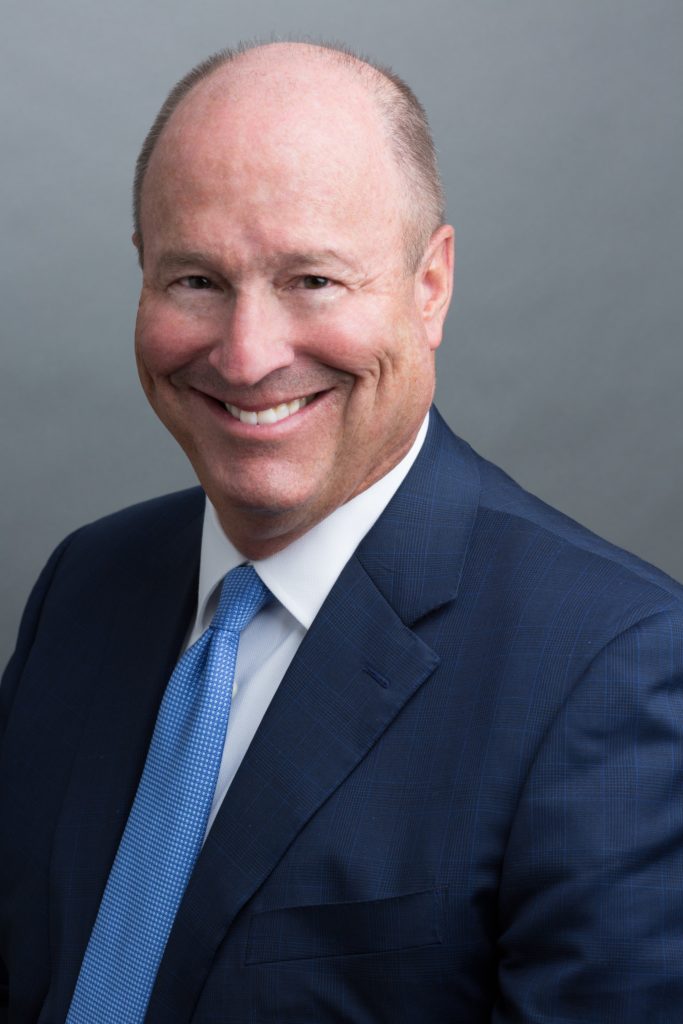During the COVID-19 pandemic that hit, well, everywhere in 2020, the banking industry was one that couldn’t simply just shut down. Banking is an essential service, and throughout the coronavirus, “Bank of America has been focused on supporting the health and safety of our teammates and maintaining uninterrupted service for clients,” according to Roger Hinshaw, Oregon & SW Washington market president for Bank of America.
Hinshaw answered a few questions from the Vancouver Business Journal about how Bank of America has fared during the course of the COVID-19 pandemic, and what steps they have taken to ensure that their teammates and clients are healthy and happy.
VBJ: Was Bank of America able to maintain all of its employees? If not, how many employees were laid off due to the pandemic?
Roger Hinshaw: Banking is an essential service, and throughout coronavirus, Bank of America has been focused on supporting the health and safety of our teammates and maintaining uninterrupted service for clients. Forbes Corporate Responders List recognized our company as one of 25 U.S. employers leading through the health crisis. We pledged no layoffs or job reductions in 2020 as a result of the pandemic, and we had about 23,000 teammates who were reskilled and realigned across the company in new capacities as job requirements and health considerations revealed themselves. We also accelerated our move to raise our minimum hourly wage to $20/hour, more than a year ahead of schedule.
In Clark County we’re even expanding our Merrill team and plan to add several Financial Advisors.
In January of 2021, in recognition of their hard work in the face of unprecedented challenges and headwinds of the previous year, our CEO informed employees they would be receiving “Deliver Together” compensation awards. On top of regular annual incentives, employees earning less than $100,000 in pay will receive a cash award of $750, and those earning more than that will receive additional restricted stock.
It also can’t be left unsaid that our company placed a tremendous emphasis on promoting health and safety and limiting the risk of exposure, including keeping teammates informed and providing timely resources, tools and ongoing access to wide-ranging, comprehensive benefits – many of which have been expanded during this time. Some examples include: no-cost coronavirus testing and related office visit charges; enhanced back-up childcare and adult day care services through which teammates can receive up to $100 per day toward back-up care without pre-approval and with their chosen provider; 24/7 access to general medical and behavioral health consultations online at no cost through 2021 for those enrolled in one of our medical plans and we also support families through student enrichment programs through trusted partners.
VBJ: Overall, how was Bank of America affected by the COVID-19 pandemic during 2020? What changes did the company see over that entire year that stemmed from the pandemic?
Hinshaw: Perhaps not surprisingly, amid stay-at-home orders and the necessity of social distancing, we saw record levels of engagement with our digital platforms. Bank of America added 1,500 new features and enhancements in 2020, exceeding the 1,000 we made in 2019. Seventy percent of Bank of America consumer client households and small business clients and 77% of wealth management client households were active on our digital platform, managing many aspects of their financial lives. In particular, we saw an increase in the use of several of our digital tools, including our AI-driven virtual financial assistant Erica (more than 17 million users, with seven million clients using Erica for the first time in 2020). At the onset of the pandemic, Erica was trained to understand more than 60,000 coronavirus-related terms and questions to better meet the evolving needs of our clients.
We also saw a 14% increase in the number of clients who elected to use our digital tools to arrange both in-person and virtual appointments. There was a 33% increase in the number of clients, including small businesses, using Zelle, our peer-to-peer digital payment program, and they conducted 517 million transactions totaling $141 billion.
VBJ: What were some changes/ways Bank of America had to adapt due to the pandemic? What adaptations continue to be made?
Hinshaw: Our number one priority is looking after people. As a result of the pandemic, we have centered our response and focused our resources on our teammates, our clients and our communities.To protect employees, Bank of America went from having a very small percentage of remote workers to approximately 90% of our workforce working remotely in the span of only a few weeks. And for those employees who couldn’t work from home, we looked to benefits like bonus pay, extra commuting benefits, meals and extended childcare benefits to give them the extra support they needed.
To better serve clients during this time, especially those experiencing hardships, we launched our Client Assistance Program in March, allowing borrowers and small business clients experiencing hardships to defer payments and consumer and small business clients to request refunds on overdraft and late fees.
Throughout the pandemic we have followed the guidance of national and local health experts and continue to take multiple steps to minimize health risks at our financial centers, including daily cleaning procedures, social distancing and limiting the number of clients that can enter a financial centers.
At the onset of the pandemic, Bank of America made a $100 million global investment to help increase medical response capacity, address food insecurity, increase access to learning and provide support to vulnerable populations. Locally, we committed to nonprofits who were bolstering emergency services and addressing food insecurity, like the $45,000 we gave to the Clark County Food Bank, as an example.
In June we made a $1 billion, four-year commitment to address economic and racial inequality accelerated by the pandemic focused on supporting communities of color who have been disproportionately impacted by the health crisis.
VBJ: What are your hopes/goals for Bank of America during 2021?
Hinshaw: First and foremost, I hope people are physically, emotionally and financially healthy and safe. I am looking forward to continued economic recovery in 2021. During Bank of America’s recent earnings call, our CEO noted that we continue to see signs of a recovery, led by increased consumer spending, stabilizing loan demand by our commercial customers, and strong markets and investing activity.
Consumers and small businesses are now spending at a pace even faster than at this time last year, and they’re also paying off the riskiest loans, such as credit card balances, at a strong rate. As the recovery continues, Bank of America will continue to focus on responsible growth and our economy is moving in the right direction with the progress we’ve seen on the latest stimulus efforts. I applaud our region’s continued drop in COVID case and progress on vaccinations means we should be able to maintain our Phase 3 reopening status in Clark County and progress beyond that now seems possible. I continue to be grateful to our talented teammates as they help our Vancouver/Portland clients and communities through this health and humanitarian crisis. We will continue to work with community leaders and trusted nonprofit partners to identify and support existing and emerging areas of need, with a particular focus on racial equality and economic opportunity.





